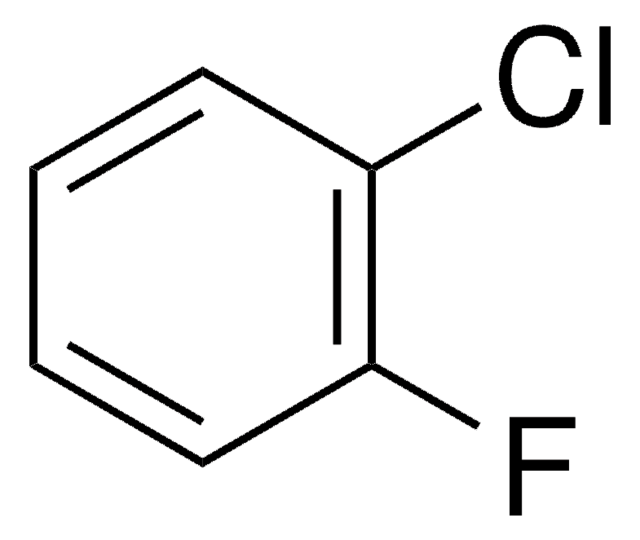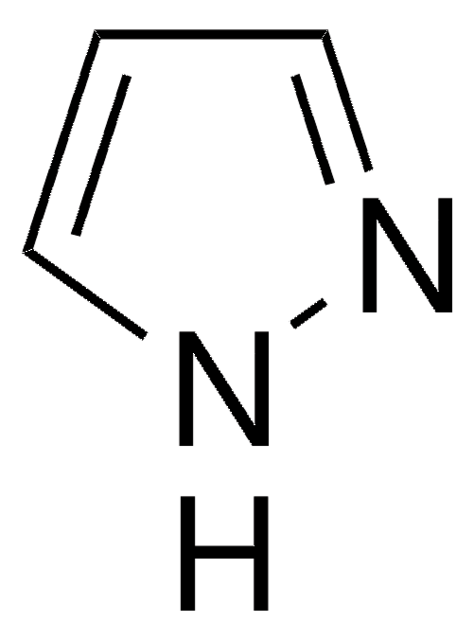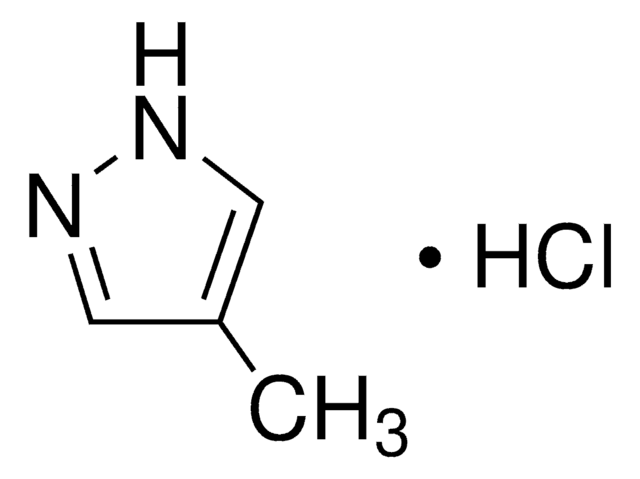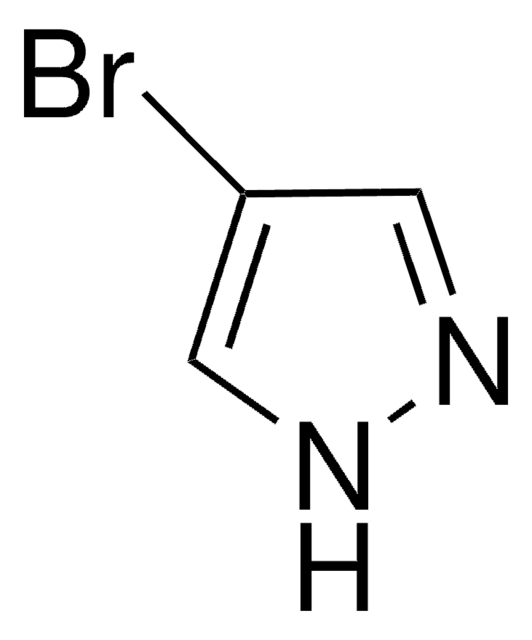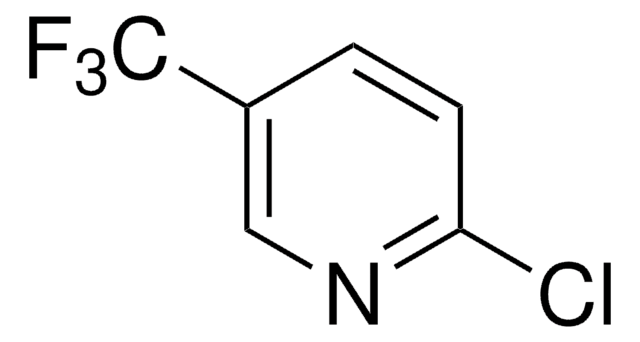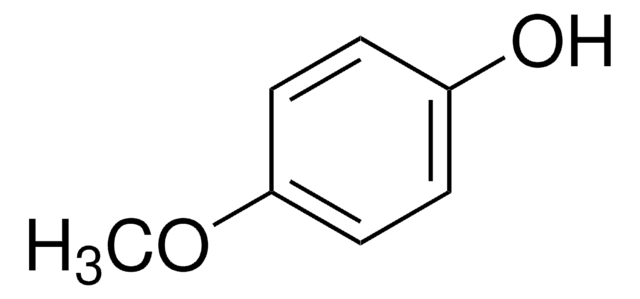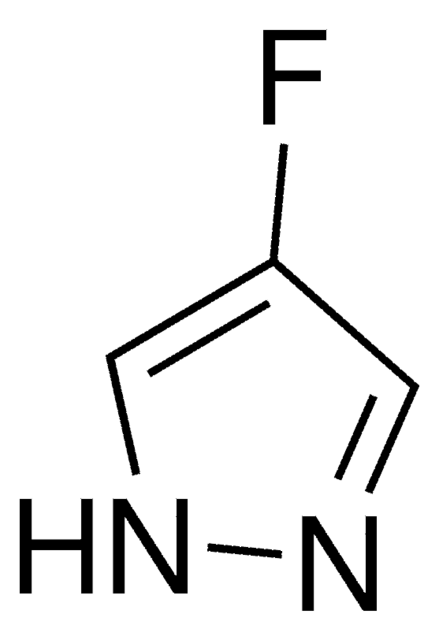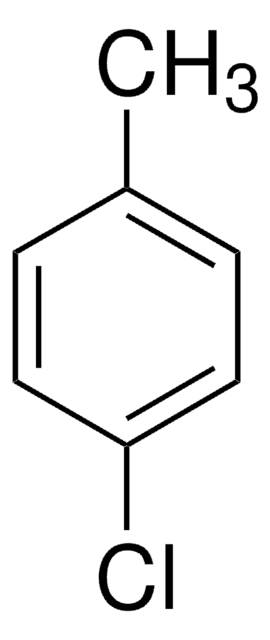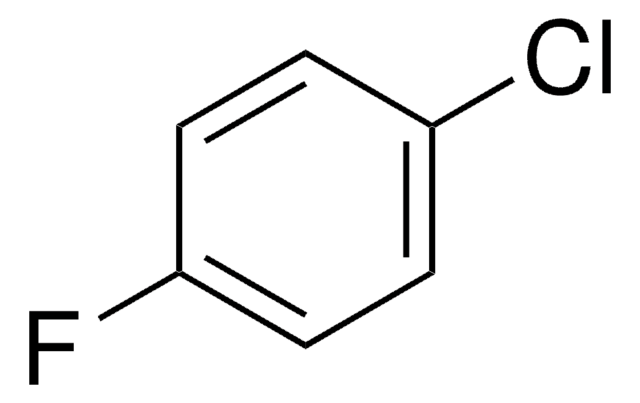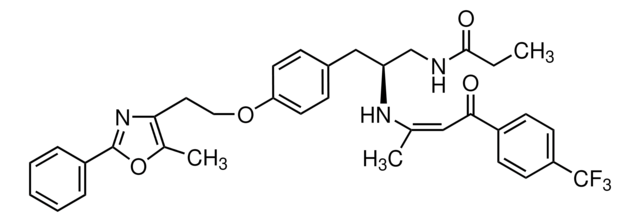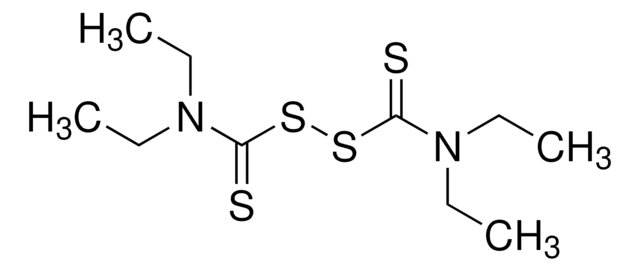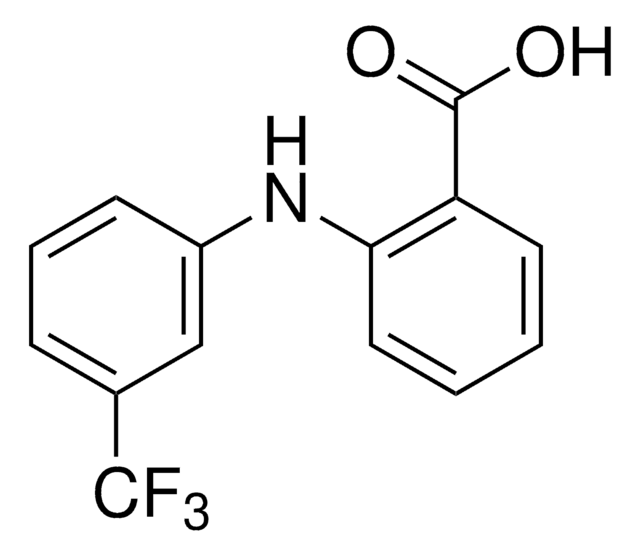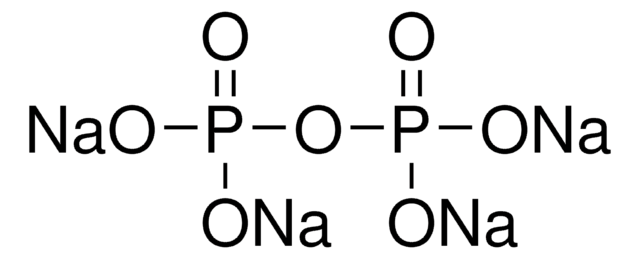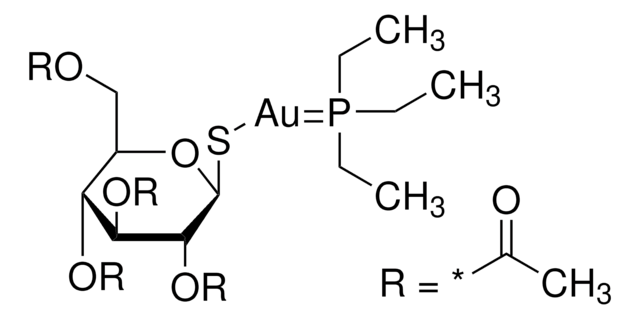222569
Fomepizole
99%
Sinonimo/i:
4-Methylpyrazole
About This Item
Prodotti consigliati
Saggio
99%
Indice di rifrazione
n20/D 1.495 (lit.)
P. ebollizione
99-100 °C/6 mmHg (lit.)
Solubilità
alcohol: soluble(lit.)
water: soluble(lit.)
Densità
0.993 g/mL at 25 °C (lit.)
Stringa SMILE
Cc1cn[nH]c1
InChI
1S/C4H6N2/c1-4-2-5-6-3-4/h2-3H,1H3,(H,5,6)
RIKMMFOAQPJVMX-UHFFFAOYSA-N
Informazioni sul gene
human ... ADH1A(124) , ADH1B(125) , ADH1C(126)
Cerchi prodotti simili? Visita Guida al confronto tra prodotti
Descrizione generale
Applicazioni
- A reactant to prepare 4-methyl-1-phenyl-1H-pyrazole by reacting with bromobenzene via N-arylation using a copper catalyst.
- A starting material for the synthesis of 4-methyl-3(5)-nitropyrazole by nitration.
- A ligand in the preparation of gallium(III) complex of 4-methylpyrazole as potential antitumor and antiviral agent.
Azioni biochim/fisiol
Avvertenze
Warning
Indicazioni di pericolo
Consigli di prudenza
Classi di pericolo
Acute Tox. 4 Oral - Eye Irrit. 2 - Skin Irrit. 2 - STOT SE 3
Organi bersaglio
Respiratory system
Codice della classe di stoccaggio
10 - Combustible liquids
Classe di pericolosità dell'acqua (WGK)
WGK 3
Punto d’infiammabilità (°F)
204.8 °F - closed cup
Punto d’infiammabilità (°C)
96 °C - closed cup
Dispositivi di protezione individuale
Eyeshields, Faceshields, Gloves, type ABEK (EN14387) respirator filter
Scegli una delle versioni più recenti:
Possiedi già questo prodotto?
I documenti relativi ai prodotti acquistati recentemente sono disponibili nell’Archivio dei documenti.
I clienti hanno visto anche
Il team dei nostri ricercatori vanta grande esperienza in tutte le aree della ricerca quali Life Science, scienza dei materiali, sintesi chimica, cromatografia, discipline analitiche, ecc..
Contatta l'Assistenza Tecnica.
